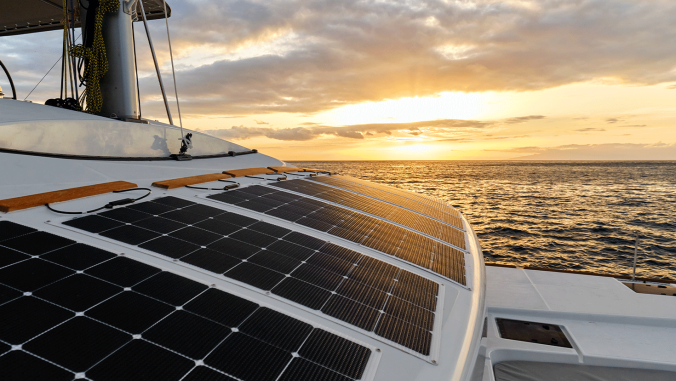Floating Solar Farms could be environment’s next game-changer

Floating solar farms are becoming increasingly popular across the world.
According to NASA, which shot one of the world’s largest floating solar farms from orbit, they’re very popular in Asia.
The 320-megawatt Dezhou Dingzhuang Floating Solar Farm in China’s Shandong province was created as part of the city of Dezhou’s efforts to decarbonize. Solar Valley, a metropolis of roughly five million inhabitants, is believed to obtain 98% of its power from solar energy.
What exactly is floating solar?
Land may be congested and expensive, and utilizing it to develop solar farms might “cause conflict with farmers, conservationists, and other organizations,” according to NASA.
Floating solar farms might be a viable alternative. They are solar panels on the surface of lakes, reservoirs, industrial ponds, or near-coastal locations. They are officially known as floating photovoltaic systems, or photovoltaics for short.
According to NASA, floating solar is a critical technology for decarbonizing economies by 2050. According to research published in Nature, covering 10% of the world’s hydroelectric reservoirs with floating solar panels could provide as much electricity as all of the world’s fossil fuel power plants combined – 4,000 gigatonnes.
South Korea, for example, is building the world’s largest floating solar power plant. According to the energy industry news site Power Technology, the project on the Saemangeum tidal flats on South Korea’s west coast would create 2.1 gigatonnes of electricity, enough to power one million households.
The largest floating solar farm in Europe is located in Portugal. It floats atop Europe’s largest manmade lake, the Alqueva reservoir, and provides around one-third of the electricity required by local communities. The floating solar farm is the size of four football fields and features 12,000 solar panels.
India and Singapore invest heavily in floating solar.
In the Indian state of Madhya Pradesh, a 600-megawatt floating solar energy facility is being developed near the Omkareshwar Dam on the Narmada River. Another 1 gigatonne floating solar power project is apparently in the works for Madhya Pradesh’s Indira Sagar dam. According to the Asian solar energy news site SolarQuarter, the central Indian state now generates 5,500 megawatts of electricity from renewable sources and plans to add another 20,000 megawatts by 2030.
The Tengah Reservoir in Singapore has the size of 45 football fields and contains 122,000 floating solar panels. It powers five water treatment plants in Singapore and contributes to the island’s objective of quadrupling solar energy production by 2025.
Solar floating projects in the United States and Germany
The largest floating solar plant in the United States is presently under construction in California. According to power supplier Sonoma Clean Power, the Healdsburg Floating Solar Farm features 11,600 solar panels and can create 4.8 megawatts of electricity. This is enough to supply 8% of Healdsburg’s electrical demand.
Germany’s largest floating solar plant is being built on an underused lake in a quarry in the town of Haltern am Sea and will save up to 1,100 tonnes of CO2 emissions each year. Since Russia’s invasion of Ukraine, Germany and other European nations have increased their emphasis on renewable energy to minimize their dependency on Russian oil and gas.
Solar panels in unexpected locations
Solar panels aren’t simply showing up on the ocean. They also appear in strange areas like roadways, golf fields, and parking lots.
In the Netherlands, for example, a 70-meter solar road’ cycling route near Amsterdam generated 3,000 kilowatts of electricity in its first six months – enough to fulfill one person’s energy demands for a year.
According to PV Magazine, a largely abandoned golf course in Japan has been converted into a solar farm. In the United States, solar-powered carports are becoming more widespread and developed by shops such as IKEA and Target.
Read:
- Karachi Will Soon Have its First Solar Park
- Aeromine Rooftop Wind System Generates 50% More Electricity Than Other Solar Options
- Australian Researchers Find Cost-Effective Way To Recycle Solar Panels
Sharing clear, practical insights on tech, lifestyle, and business. Always curious and eager to connect with readers.


 4 min read
4 min read

















